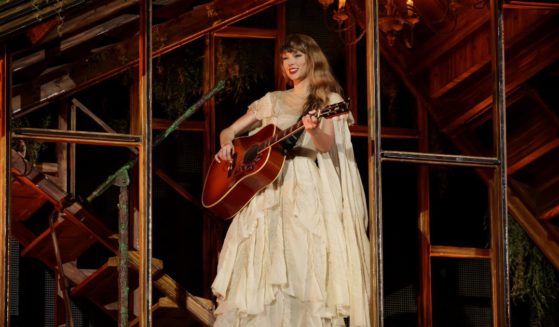Why do zebras have stripes? Perhaps to dazzle away flies
LONDON (AP) — Zebra stripes are dazzling — particularly to flies.
That’s the conclusion of scientists from the University of Bristol and the University of California at Davis who dressed horses in black-and-white striped coats to help determine why zebras have stripes.
The researchers found that fewer horseflies landed on the cloaked horses than on the ones without striped coats, suggesting that zebra stripes may offer protection from blood-sucking insects that can spread disease.
“This reduced ability to land on the zebra’s coat may be due to stripes disrupting the visual system of the horse flies during their final moments of approach,” said Martin How, a research fellow at the University of Bristol. “Stripes may dazzle flies in some way once they are close enough to see them with their low-resolution eyes.”
From a distance, the flies were equally attracted to both horses and zebras, with the same number of insects hovering around both types of animals. But when the flies got closer, things get dicey. The flies landed less frequently on the zebras and the horses covered in striped coats.
“Once they get close to the zebras, however, they tend to fly past or bump into them,” said Tim Caro, a professor in the U.C. Davis Department of Wildlife, Fish and Conservation Biology. “This indicates that stripes may disrupt the flies’ abilities to have a controlled landing.”
The work , reported in the journal Public Library of Science ONE, seeks to answer one of the oldest questions in zoology — why do zebras have stripes? Charles Darwin had his theories. So did British naturalist Alfred Russel Wallace.
But the scientists from Britain and California sought to examine that question by studying both horses and zebras at the Hill Livery in Britain, which works with zoos in Europe on conservation for zebras. That provided a controlled environment where the horses could be dressed up and closely observed to test the theory.
“It’s one of those pieces of research that you say, ‘why hasn’t someone done this before?'” said Tim Woodfine, the director of conservation at Marwell Wildlife in southern England. He did not take part in the study. “It’s simple and neat. I think it’s a great piece of work,” he said.
How, an expert on animal vision, told The Associated Press on Thursday there are reasons to be “quite excited” about the research, which he said helps scientists understand what’s happening in the mind of a fly.
The insights have broader implications for technology such as driverless cars, which are inspired by insect vision. If stripes disrupt a fly, they might also disrupt a driverless car’s systems, according to How.
“What we needed to do is get our mind into the eye of the fly,” How said. “They have very different eyes from us.”
Erica McAlister, the senior curator of flies and fleas at the Natural History Museum in London, said the research contributes information to a subject long debated by scientists.
“We’ve been arguing about zebra stripes for 75 years,” said McAlister, who was also not involved in the study.
But there are also human applications. How says from now on, he’s wearing stripes while riding his bicycle during horse-fly season.
Caro hopes the study will underscore the wonders that remain to be discovered in the natural world.
“If we can try to pique the public’s appreciation of the wonders of nature, they’ll be less cavalier about destroying it,” he said. “That’s my hope.”
___
This story has been corrected to show the verb in the closing quote should be “pique,” not peak.
The Western Journal has not reviewed this Associated Press story prior to publication. Therefore, it may contain editorial bias or may in some other way not meet our normal editorial standards. It is provided to our readers as a service from The Western Journal.
Truth and Accuracy
We are committed to truth and accuracy in all of our journalism. Read our editorial standards.












